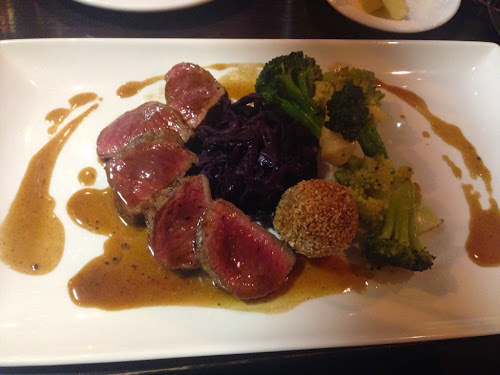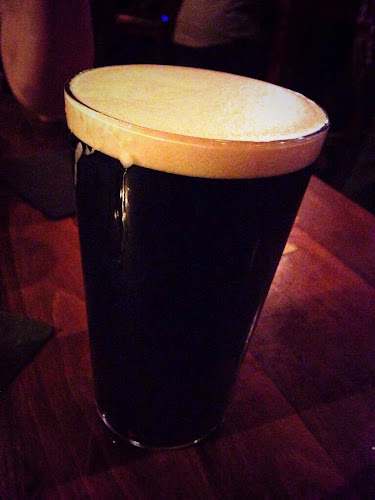Christmas Spiced Clementine Negroni
Neil, Eating isn't Cheating
Tuesday, December 23, 2014
The Negroni is my favourite cocktail. Bitter, strong, pungent and aromatic - it is an assault on the senses that is very much an acquired taste.
So when I was asked by Waitrose if I would like to come up with a winter cocktail using Hendrick's Gin, it was the first thing that came to mind.
Of course, 'tis the festive season and this isn't just any old Negroni I'll be making - This is my Christmas Spiced Clementine Negroni, something that I first made last year and which I'm sure will be a staple for years to come. I love it.
Personally I like to make a batch big enough for four people. That's a lie. I like to make a batch big enough for two people to have two, or one person to have four. It's Christmas, let your hair down.
Ingredients (makes four short, strong cocktails)
Start by very gently warming the vermouth and Campari in a pan with the spices and juice of one clementine (don't throw it away as we need the peel) for around 5 minutes - do not let this simmer, it should just warm on a medium-low heat or you will burn off all the alcohol. Remove to one side and allow to cool completely (around half an hour).
Next add a couple of handfuls of ice to a large jug and pour in the cooled mulled mixture, followed by the gin. Stir well for a minute or so, until well combined and the ice has broken down just a little bit.
Set out four old fashioned tumblers and half fill with ice (or use an ice ball as I like to), before pouring in the cocktail mix through a fine strainer, holding back the ice.
NB - The main thing is to stop the spices ending up in the glass, so no problem if you don't have a strainer - just hold the ice back extra carefully with your hand or a slotted spoon.
Finally slice four pieces of peel from the clementine, trying to get as little of the white pith as possible, and rub around each glass' rim before adding a cut and garnishing the side of the glass. Add a couple of cloves to the peel if you're feeling fancy.
This is really, really worth making. A fantastically spicy, Christmassy, classy cocktail that is bitter and aromatic yet has a beautiful background sweetness most Negroni's don't, thanks to the clementine juice. It tastes decadent and smooth, but the Campari keeps the sweetness in check.
Wonderful!
So when I was asked by Waitrose if I would like to come up with a winter cocktail using Hendrick's Gin, it was the first thing that came to mind.
Of course, 'tis the festive season and this isn't just any old Negroni I'll be making - This is my Christmas Spiced Clementine Negroni, something that I first made last year and which I'm sure will be a staple for years to come. I love it.
Personally I like to make a batch big enough for four people. That's a lie. I like to make a batch big enough for two people to have two, or one person to have four. It's Christmas, let your hair down.
Ingredients (makes four short, strong cocktails)
- 100ml Campari
- 100ml Martini Rosso (sweet vermouth)
- 100ml Good quality gin (I used Hendrick's)
- 4 cloves (plus more for garnish if wished)
- Stick of cinnamon
- Clementine
Start by very gently warming the vermouth and Campari in a pan with the spices and juice of one clementine (don't throw it away as we need the peel) for around 5 minutes - do not let this simmer, it should just warm on a medium-low heat or you will burn off all the alcohol. Remove to one side and allow to cool completely (around half an hour).
Next add a couple of handfuls of ice to a large jug and pour in the cooled mulled mixture, followed by the gin. Stir well for a minute or so, until well combined and the ice has broken down just a little bit.
Set out four old fashioned tumblers and half fill with ice (or use an ice ball as I like to), before pouring in the cocktail mix through a fine strainer, holding back the ice.
NB - The main thing is to stop the spices ending up in the glass, so no problem if you don't have a strainer - just hold the ice back extra carefully with your hand or a slotted spoon.
Finally slice four pieces of peel from the clementine, trying to get as little of the white pith as possible, and rub around each glass' rim before adding a cut and garnishing the side of the glass. Add a couple of cloves to the peel if you're feeling fancy.
This is really, really worth making. A fantastically spicy, Christmassy, classy cocktail that is bitter and aromatic yet has a beautiful background sweetness most Negroni's don't, thanks to the clementine juice. It tastes decadent and smooth, but the Campari keeps the sweetness in check.
Wonderful!





















